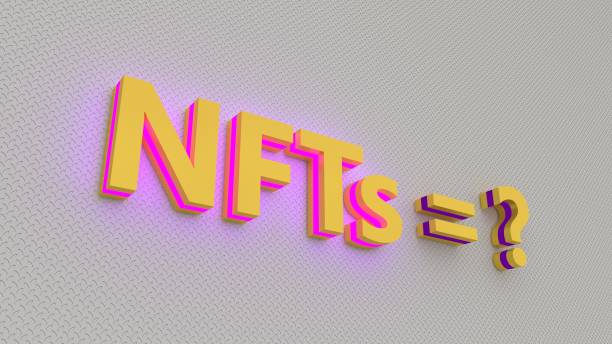Sales of non-fungible tokens fell to a 12-month low in June, as a result of the cryptocurrency market meltdown. NFTs allow someone to possess a one-of-a-kind digital thing, even though that item can be readily replicated. A digital, decentralized ledger known as a blockchain is used to keep track of ownership. Every cryptocurrency is now in the red, and this trend is expected to continue in the near future. As sales continue to decline and NFT purchasers disappear, a similar pattern may be seen in the NFT spaces.
There has been a 150 percent reduction in NFT sales since April according to the CryptoSlam NFT tracker. A 67% decrease in the value of an NFT’s average price from $589 to $192 between April and June.
NFT sales fell to $648 million in June, the lowest figure since June 2021, according to Chainalysis, a crypto research organization. Ethan McMahon, an economist at Chainalysis, noted that “this fall is undoubtedly tied to the overall slump in crypto markets.”
Many sellers have been forced to double or treble their mint pricing in order to avoid a loss. Conventional payment services and NFT platforms are working together to make fiat payment the norm in the area because of the volatility in the market.
NFT Market Dips Down
Compared to last November, when the crypto market was estimated at $3tn, nowadays it sees a significant decline and is estimated at less than $1tn. In order to be exchanged, NFTs need blockchain, the decentralized ledger that was initially used by bitcoin to track ownership of the cryptocurrency. Most of them rely on Ethereum’s blockchain, which uses a carbon-intensive proof of work technique to keep track of transactions.
Collectors aren’t buying the dips because crypto exchanges are agitated by liquidity and security difficulties. According to NonFungible.com, primary and secondary NFT sales have both decreased by more than 20% in volume and fiat value during the previous weeks. For the first time since August 2021, the NFT collection of the Bored Ape Yacht Club (BAYC) has traded below $100,000. Since May, when BAYC NFTs were selling for $200,000 apiece, the floor price has dropped by 100 percent.
Regardless the crypto market collapse and the war continuity these days, some investors who want to see benefits in the meantime of the crypto market crash have seen the solution. For them one of the options is to use the AI-generated software, similar to Bitindex AI, which allows customers to get the most out of their trading process. In addition to that, those traders who want to protect their finances can set stop-loss orders. AI-generated software, apart from other
benefits, furnishes clients with an opportunity to analyze the market, which can aid them to forecast future price changes.
A token representing the first tweet by Twitter’s co-founder Jack Dorsey fetched $2.9 million at its peak on the NFT market. It sold for $69 million; Axie Infinity’s “play to earn” token was valued at $9.75 billion; and Coca-Cola generated more than $575,000 by selling digital objects like a personalized blazer that can be worn in the metaverse, among other things.
Cryptocurrency markets, particularly Ethereum, are the primary cause of the drop in NFTs. Due to NFTs being typically issued over the Ethereum Network. The current price of Ethereum is just shy of $1000. In addition to BAYC, many other highly regarded NFT collections have had their NFT floor prices drop. Otherdeed, for example, has lost 12% of its value in the previous 24 hours, while Moonbirds has lost 42%.
The NFT market’s unpredictability is being addressed by allowing mints to be denominated in fiat. NFT markets have been targeted by both Mastercard and Stripe in the last year as potential integration points for their payment systems. It’s the firms’ goal to wreak havoc on the way NFTs are traded across wallets.
Chainalysis estimates that NFT sales will top $42 billion by 2022, far ahead of last year’s $40 billion total. More than half of the 2022 sales have already been completed in January and February.
Due to concerns about increasing inflation and increased interest rates, investors’ desire for riskier assets such as tech stocks and digital assets has been constrained by the volatility in the broader stock markets.
As a professor of blockchain at Lehman College, Sean Stein Smith sees “major obstacles” to the widespread adoption of unique digital valuables in price fluctuation. With fiat money as a background for buyers and sellers, NFTs might “attract ideas and capital into more fundamentally solid initiatives,” according to Smith’s statement.
Confidence in digital currencies has been damaged by the demise of so-called stablecoin Terra and problems at crypto-related financial firms such as Celsius Network, which has halted withdrawals of its customers’ crypto assets.
So what does the future hold for the crypto and NFT markets? According to some analysts, the bearish market is going to stay with us, because crypto has never been more correlated with other financial markets than it is now. As the stock and forex markets are going down and decreasing in value, the crypto market does so as well.
As a result of this, in order to see the rebound of the crypto market, it’s important to see the change in the investors’ sentiments. Nowadays according to the fear and greed index, investors are afraid of investing their money in financial markets and crypto and NFTs are no exception.









